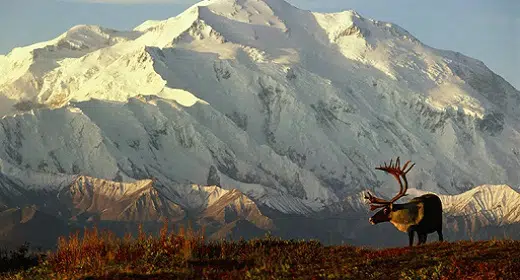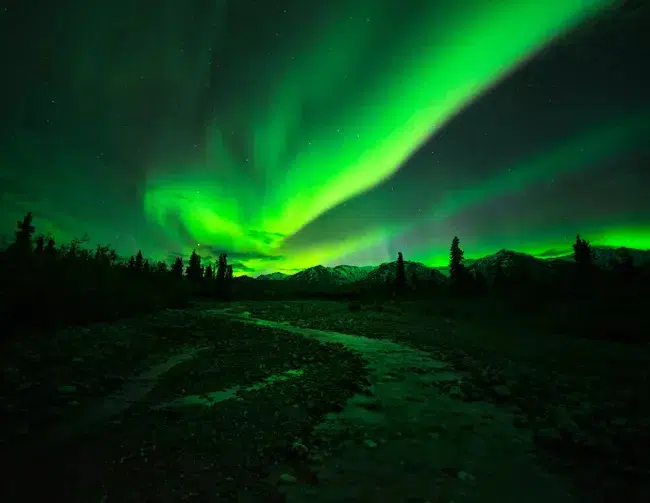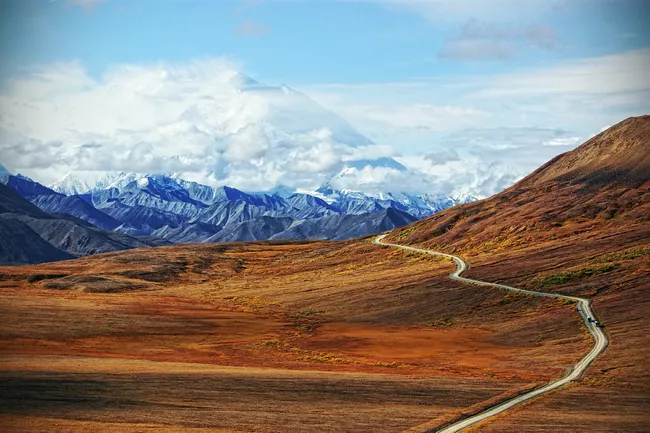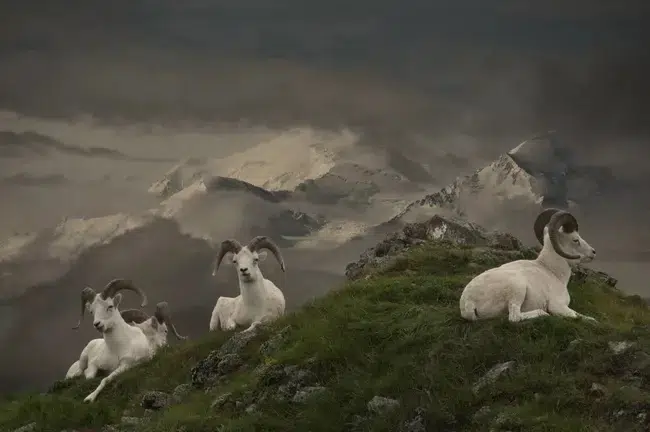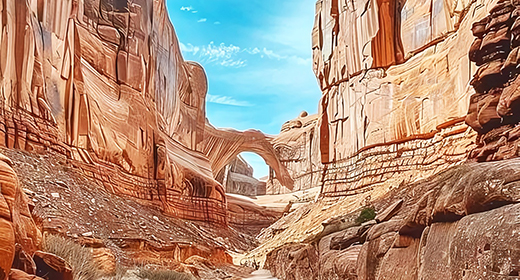by Ryan Slattery: Meaning “the tall one” in the language of its early Indigenous inhabitants, Denali lives up to its name. The mountain, at an elevation of 20,310 feet, is the highest peak in all of North America…
Denali National Park and Preserve not only protects this towering pinnacle but also 6 million acres of roadless Alaskan wilderness. A land stomped over by dinosaurs millions of years ago is now a vast, remote place where caribou, grizzly bears, and wolves roam freely.
Explore 10 epic facts about Denali and learn why it’s a must-see gem of the national park system.
Denali Is an International Biosphere Reserve
One of 727 biosphere reserves worldwide, Denali National Park and Preserve was granted membership into UNESCO’s rather elite club in 1976 due to its geological history, contrasting ecosystems, diverse plant life, and abundant wildlife.
Four-Legged Rangers Guard the Territory
Denali National Park is the only park that has sled dogs as rangers. These canine cops have been patrolling the Alaskan wilderness since the 1920s.
The kennels, built in 1929, are open year-round and are definitely worth a visit for the cuteness factor alone. The dogs help patrol about 3,000 miles of the park each winter.
You Can Witness the Northern Lights
Seeing the aurora borealis or northern lights is a bucket list item. And while hard to predict, it’s quite possible to catch the electric glow of the nighttime sky in Denali.
The best way to see the northern lights is to plan ahead, visit from fall through early spring and keep tabs on the aurora forecast. Even if the aurora doesn’t appear, the stargazing in Denali is top-notch.
Despite Its Size, the Park Has Just a Single Road
At 9,492 square miles, Denali National Park is bigger than the state of New Hampshire (9,351 square miles), yet it only has one road.
The winding 92-mile route, which dead-ends at an old mining town forcing travelers back the way they came, is mostly used by park-operated transit buses or tour buses offering a peek at this colossal park.
Denali’s Peak Is Not Always Visible
Denali often has its head in the clouds. The peak is only visible about 30% of the time, so spotting it isn’t exactly guaranteed. The blame lies with the weather.
Alaska’s high-peaked mountain ranges actually influence and create cloud cover. When a low-pressure system heads in from the north through the Gulf of Alaska, the moist cold air hits the mountain ranges and condenses, creating clouds as it rises covering Denali’s 20,310-foot peak. The park even sells “30% Club” merchandise in its shops.
The Park’s Glaciers Are Shrinking
Not surprisingly, the park’s glaciers are melting. What worries scientists more is the alarming rate at which they’re melting.
Roughly 15% of Denali National Park is covered with glaciers (1,422 square miles) and the park’s largest one on the north side, Muldrow Glacier (34 miles long), is moving rapidly. Typically, the Muldrow Glacier moves 3 to 11 inches per day, but a recent surge has seen the glacier slide 100 times faster than normal, moving 30 to 60 feet per day.
Sound Is Monitored in the Park
One way to understand what’s really going on in the park is to listen. And for the past decade, officials at Denali National Park have done just that through a soundscape program.
With dozens of sound stations strategically located, scientists are able to record the natural and human-induced sounds heard all over Denali, capturing everything from wolves howling and the singing of songbirds to sliding glaciers and thunderous avalanches.
Alaska’s Big 5 Roam the Park
Spotting the big 5 (the Alaskan version of Africa’s big 5 safari animals) takes a bit of luck. But Denali’s remote landscape is home to caribou, Dall sheep, grizzly bears, moose, wolves, and many more animals. The park has 38 mammal species, 172 different types of birds, 14 fish species (three types of salmon), and one amphibian—a native wood frog.
The Park Has a Rich Paleontology Past
There is a place in Denali National Park called the “dinosaur dance floor.” That in itself should be enough to pique anyone’s interest in learning more about Denali’s prehistoric history.
The discovery of dinosaur prints in Denali is relatively new. Since the first prints were found in 2005, all dating to 65-72 million years ago, thousands of fossils (tracks, footprints, and body prints) have been unearthed.
Fossil sites containing tracks where both meat-eating theropods and plant-loving, duck-billed hadrosaurs crossed paths have come to be called dance floors.
Denali Was Once Known as Mount McKinley
Called Denali in native Alaskan tongue for hundreds of years, the mountain took on a new moniker in 1896 when a gold prospector referred to it as McKinley in honor of presidential candidate William McKinley, who won the election the following year.
That name was officially recognized by the U.S. in 1917 with the stroke of a pen when Mount McKinley National Park was established. Locally, that didn’t sit well and the Alaska Board of Geographic Names continued to recognize the mountain as Denali. In 1980, the park was renamed Denali National Park and Preserve and finally, in 2015, the U.S. restored the name, aligning it with the state designation.







